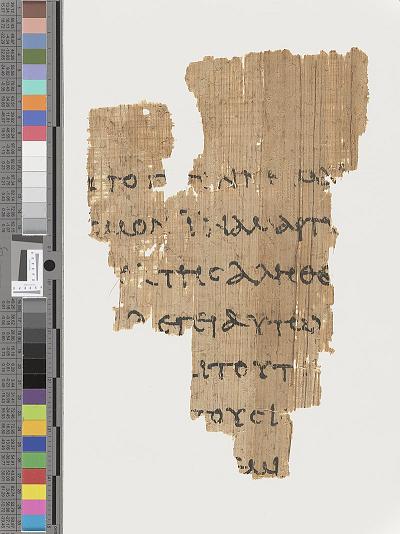| Change to Book/Chapter View |
|
|
|
Translation process is ongoing. For current status see details |
|
|

Papyrus 52 Discovered: Fayum or Oxyrhynchus, Egypt Location: Manchester England; John Rylands University Library Contents: John 18:31-38 Notes: This papyrus is usually considered to be the earliest New Testament manuscript still in existence.
John 18 31 Pilate therefore said to them, “Take him yourselves, and judge him according to your law.” Therefore the Jews said to him, “It is illegal for us to put anyone to death,” 32 that the word of Jesus might be fulfilled, which he spoke, signifying by what kind of death he should die. 33 Pilate therefore entered again into the Praetorium, called Jesus, and said to him, “Are you the King of the Jews?” [..] 37 Pilate therefore said to him, “Are you a king then?” Jesus answered, “You
say that I am a king. For this
reason I have been born, and 38 Pilate said to him, “What is truth?” When he had said this, he went out again to the Jews, and said to them, “I find no basis for a charge against him.
[1] This area of the papyrus is missing, but there is not enough space for these words to have been there. |
How to read these pages: • The
translation to the left is based on the World English Bible. Words in regular
black font are words in the manuscript matching the Majority Text for that
passage. • Words
in italics cannot be seen in the manuscript, since the manuscript is
fragmentary. These words are supplied for readability by the World English
Bible translation. • Words
present in the manuscript but with some letters unreadable or missing are in blue
like this: blue. One Greek word often is
translated into multiple English words, and when this occurs, all the English
words are in blue. • Words
present in the manuscript but with spelling or trivial word order differences that do not affect the
meaning are in green like this: green. • If
the manuscript is different from the Majority Text, words in the Majority
Text that are missing from the text of the manuscript are marked through in red
like this: • If the manuscript is different from the Majority Text, words in the manuscript that are not in the Majority Text are underlined in red like this: new words.If the manuscript differs from the Majority Text yet matches another well-known text, this is noted in the footnotes.
|
